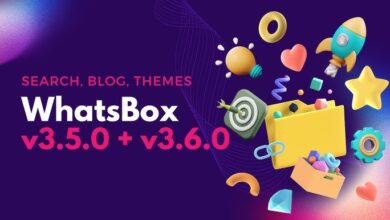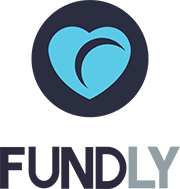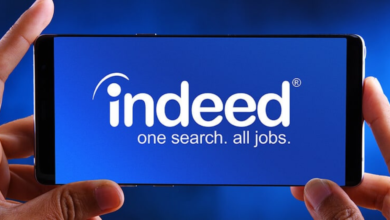Why Robinhood Is Bad Hidden Dangers Every Investor Should Know

Robinhood, the stock trading app that promised to democratize finance for all, has amassed over 20 million users and gained significant influence among new investors. With its sleek user interface, zero-commission trading, and gamified user experience, Robinhood has become a go-to platform for beginners entering the world of investing. why robinhood is bad its appealing surface lies a variety of serious concerns that have led critics and regulators alike to question whether Robinhood is actually helping or harming its users.
This comprehensive guide explores why Robinhood is bad, exposing its flaws in transparency, user safety, business ethics, and financial education. If you’re considering using Robinhood—or already have—this article will open your eyes to the real issues hiding in plain sight.
Table of Contents
- Introduction: The Rise of Robinhood
- 1. Misleading Gamification of Trading
- 2. Payment for Order Flow (PFOF)
- 3. Lack of Investor Education Tools
- 4. Customer Support Nightmares
- 5. Outages During High Volatility
- 6. Encouraging Risky Behavior
- 7. Regulatory Troubles and Lawsuits
- 8. Security and Data Privacy Concerns
- 9. IPO Controversy and Broken Promises
- 10. Better Alternatives to Robinhood
- Conclusion: Is Robinhood Worth It?
Introduction: The Rise of Robinhood
Founded in 2013 by Vlad Tenev and Baiju Bhatt, Robinhood revolutionized the brokerage industry by introducing commission-free stock and options trading. This forced legacy platforms like E*TRADE, Charles Schwab, and Fidelity to also drop their trading fees. The result? A massive user boom, especially among millennials and Gen Z, who previously saw stock trading as something for the wealthy.
But with great disruption comes great responsibility—and Robinhood has often fallen short. Let’s dive into the top reasons why Robinhood is bad for most investors, especially beginners.
Misleading Gamification of Trading
One of the biggest criticisms of Robinhood is how it gamifies investing. Its flashy interface, confetti animations, and swipe-to-trade gestures make stock trading feel more like a game than a serious financial decision.
Why It’s Bad:
- Encourages impulsive behavior: The dopamine rush from buying/selling is addictive.
- Rewards volume over strategy: Users may trade more often than necessary, incurring losses.
- Psychological manipulation: Bright colors and achievement badges push users to trade more frequently without understanding the risks.
This “game-like” experience can be incredibly dangerous for users with little financial literacy. Trading is not a game—it’s your future.
Payment for Order Flow (PFOF)
Robinhood’s main source of revenue is a controversial practice called Payment for Order Flow (PFOF). This means they sell your trade orders to market makers like Citadel Securities instead of executing them on public exchanges.
Why It’s Bad:
- Conflict of interest: Robinhood is incentivized to route your trades to the highest bidder, not the best price.
- Lack of transparency: Users don’t know if they’re getting the best deal.
- Hidden costs: While trades appear “free,” poor order execution may cost users more than traditional broker fees.
In 2020, the SEC fined Robinhood $65 million for misleading customers about PFOF and failing to provide best execution.
Lack of Investor Education Tools
Robinhood markets itself to beginners but does shockingly little to educate its users about investing.
The Problems:
- Limited educational content: No comprehensive tutorials, simulations, or financial planning tools.
- No human advisors: Unlike rivals like Fidelity or Schwab, you can’t speak with experts.
- Complex products with little guidance: Options trading, margin trading, and crypto are all offered with minimal user education.
For new investors, this lack of guidance can lead to devastating mistakes—like buying high-volatility meme stocks or using options without understanding the risks.
Customer Support Nightmares
When things go wrong on Robinhood, getting help is infamously difficult. Until recently, the platform had no phone support—only email-based communication with slow response times.
Consequences:
- Critical delays in resolving account access issues or trading errors.
- Lost money during outages with no immediate assistance.
- Emotional distress, especially during volatile periods.
In one tragic case, Alex Kearns, a 20-year-old Robinhood user, died by suicide after mistakenly believing he owed over $700,000 due to a misinterpreted options trade. His family blamed the lack of customer support and clear communication.
Outages During High Volatility
Robinhood has a long history of system outages, often occurring during periods of market volatility when users need access most.
Notable Outages:
- March 2-3, 2020: Complete trading blackout during a historic market rally.
- January 2021: Restricted trading during the GameStop short squeeze.
- Crypto crashes: Multiple app freezes during Bitcoin and Dogecoin surges.
These outages caused users to miss trades, lose money, and feel betrayed by a platform that failed in moments of need.
Encouraging Risky Behavior
Robinhood makes it dangerously easy for inexperienced users to trade high-risk assets, including:
- Options (calls and puts)
- Leveraged ETFs
- Cryptocurrencies
- Margin trading
Why It’s Harmful:
- No experience required: Users can unlock options trading with a few taps and basic answers.
- Increased risk of losses: These instruments are volatile and complex.
- Moral hazard: Robinhood profits from every trade, regardless of user success.
Unlike traditional brokers, Robinhood doesn’t require advanced tests or consultations before enabling high-risk trading—often leading to preventable losses.
Regulatory Troubles and Lawsuits
Robinhood has been under intense regulatory scrutiny for years, with multiple lawsuits and fines to its name.
Notable Legal Issues:
- $70 million FINRA fine (2021): For misleading customers, outages, and approving risky options trading.
- GameStop saga (2021): Robinhood restricted trading of GME and AMC, sparking allegations of market manipulation.
- Multiple class-action lawsuits: Filed by users who claim to have been harmed by outages, bad execution, and deceptive practices.
These legal troubles indicate systemic issues with how Robinhood operates—not just a few isolated incidents.
Security and Data Privacy Concerns
While Robinhood promotes itself as tech-forward, its security infrastructure has not been bulletproof.
Issues Raised:
- Data breaches: In 2021, a hacker accessed the personal data of 7 million users, including email addresses and full names.
- Weak account security: No mandatory two-factor authentication until recently.
- Third-party integrations: Raise concerns about data sharing and tracking.
For a financial platform, security should be top-tier—but Robinhood has repeatedly shown vulnerabilities.
IPO Controversy and Broken Promises
When Robinhood went public in July 2021, it promised to share IPO stock access with retail investors. But many users were upset about:
- Lack of transparency on allocation.
- Stock price tanking immediately after IPO.
- Perceived betrayal after years of claiming to be “for the people.”
The IPO experience highlighted how Robinhood often talks the talk of democratization but doesn’t always walk the walk.
Better Alternatives to Robinhood
If Robinhood isn’t the right platform, what should investors consider instead? Fortunately, many better, safer alternatives exist.
Top Competitors:
- Fidelity Investments
- Strong investor education
- No commissions
- Real advisors available
- Charles Schwab
- Offers fractional shares like Robinhood
- Excellent customer support
- Robust tools and research
- Webull
- Similar mobile experience
- More advanced charting tools
- Better customer support and less gamification
- SoFi Invest
- Great for beginners
- Offers automated investing
- Includes educational content and real advisors
Each of these platforms provides more transparency, support, and long-term value than Robinhood.



